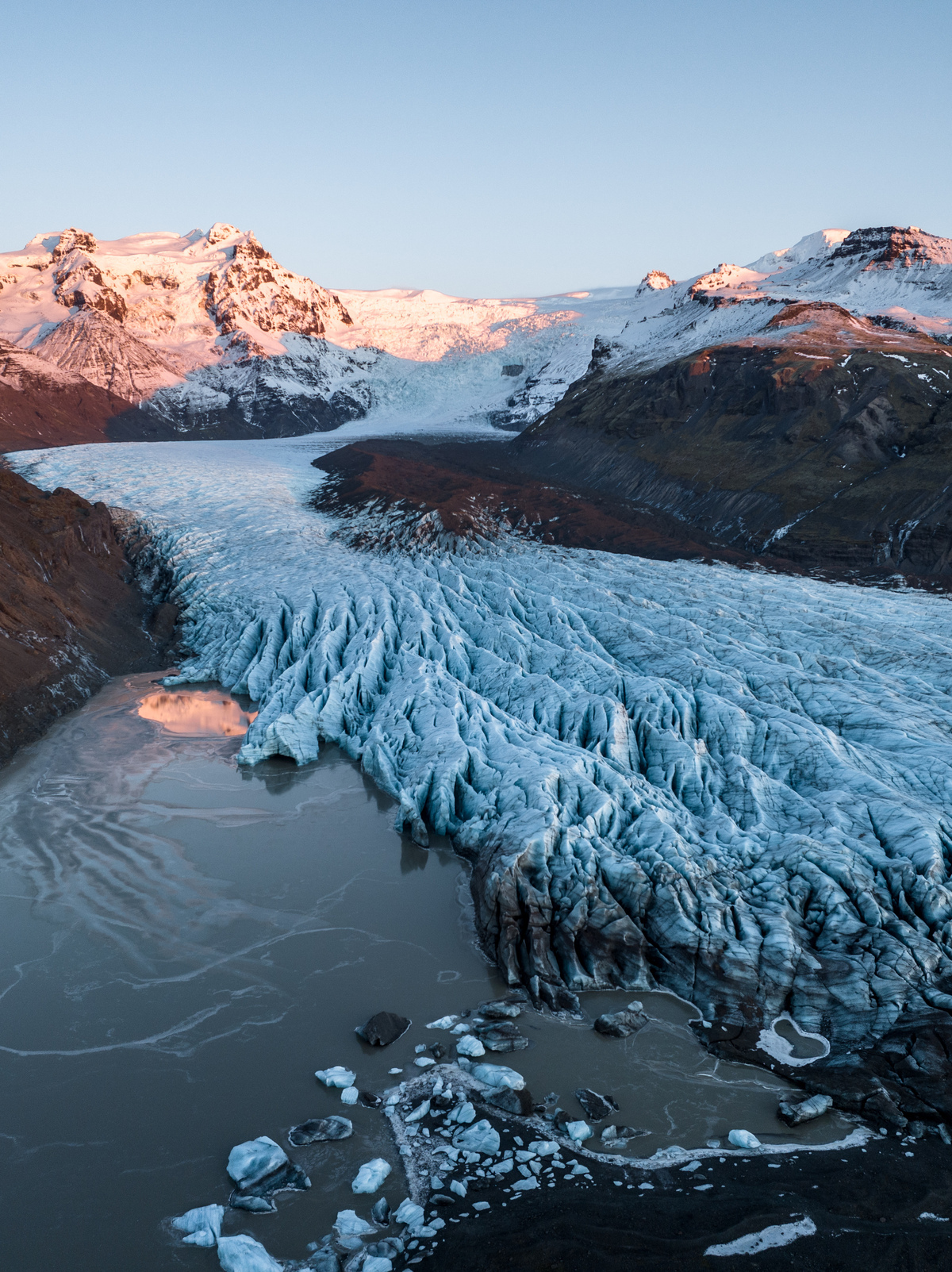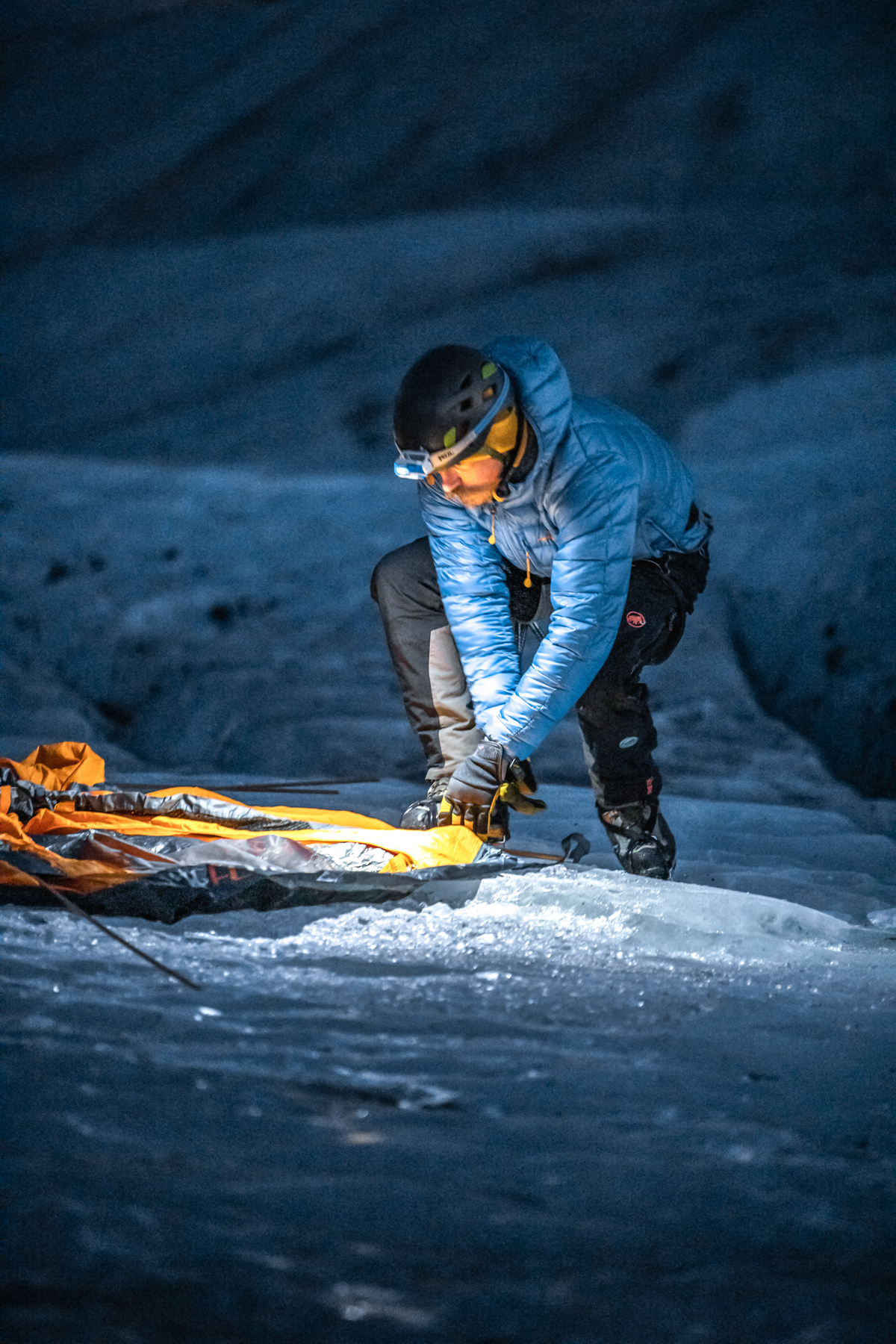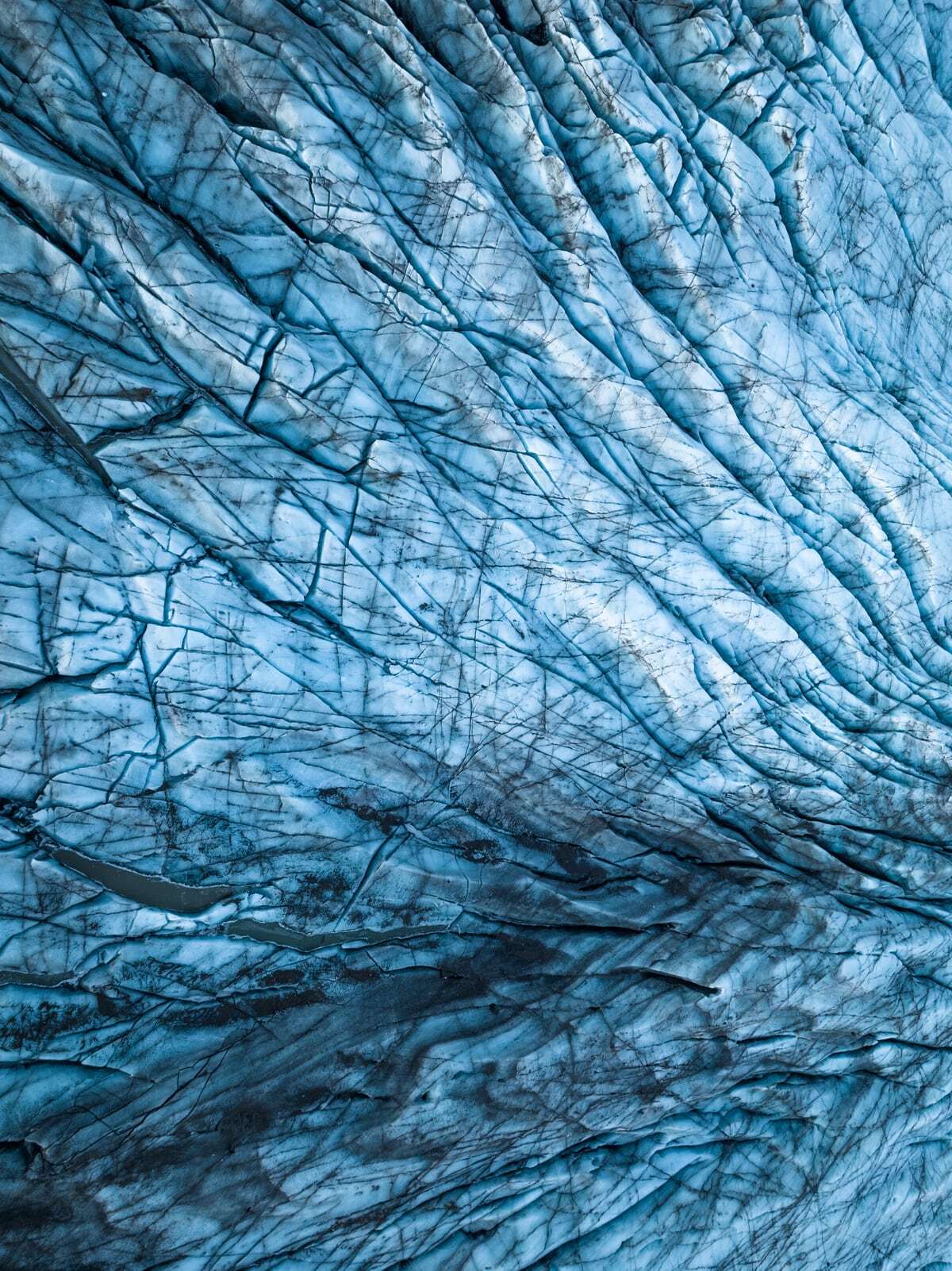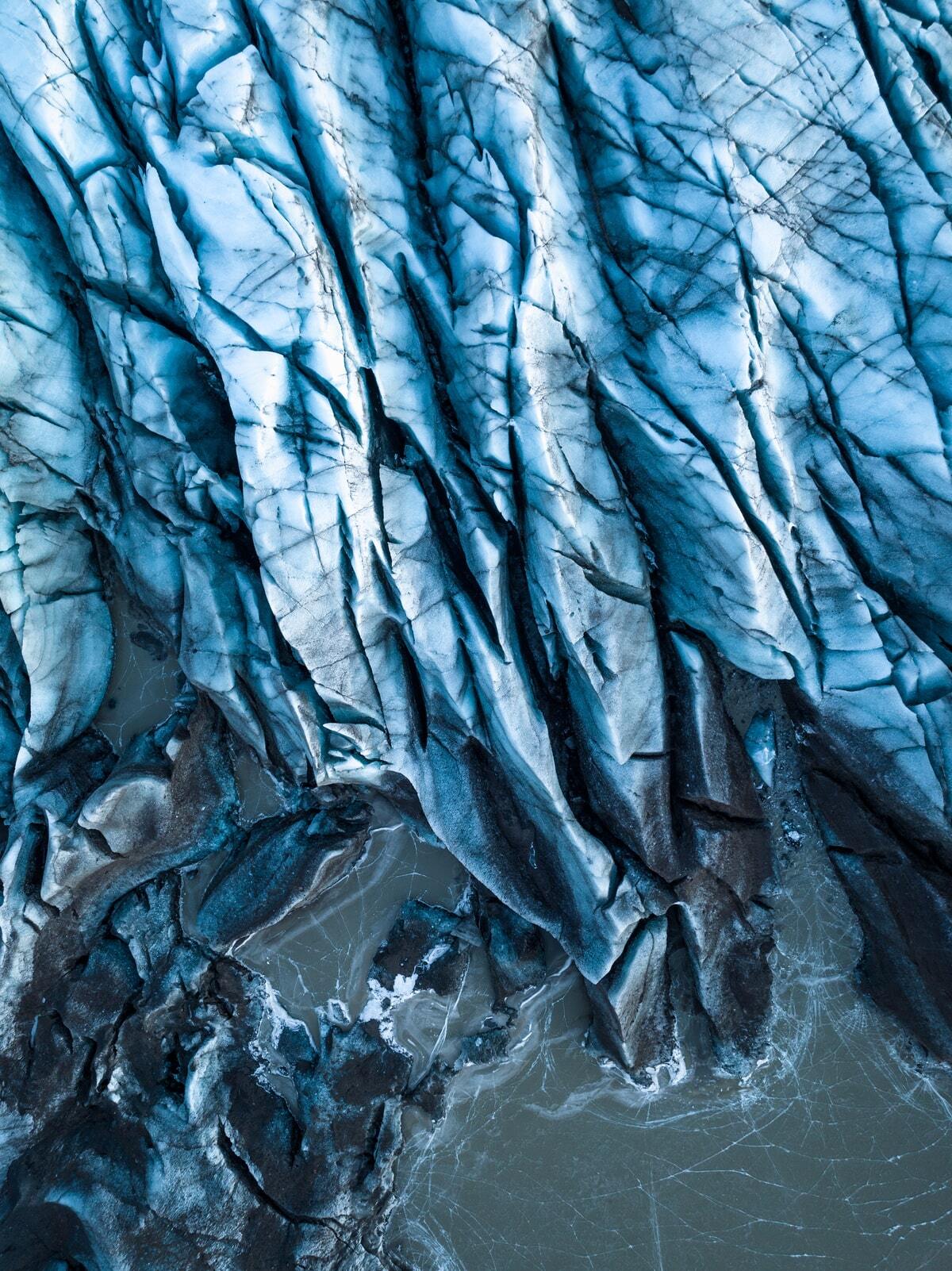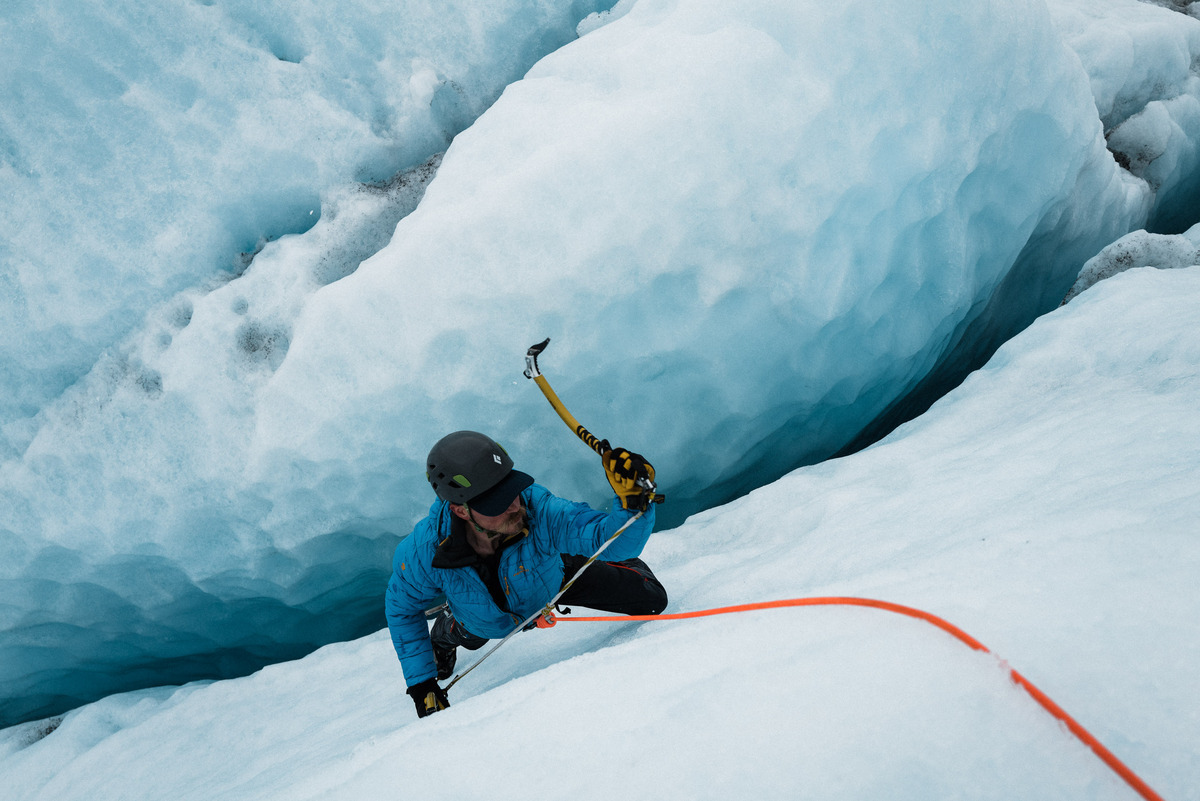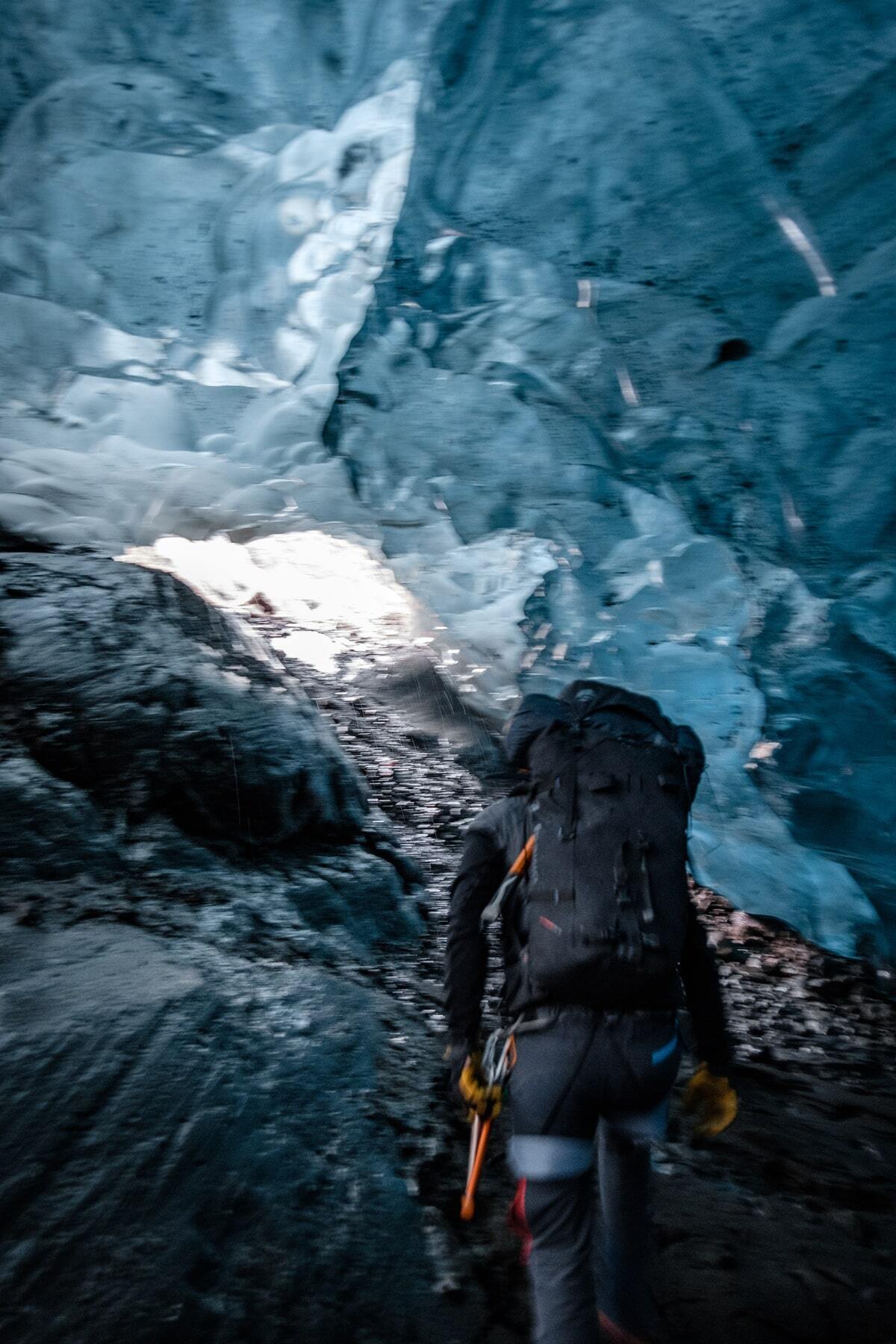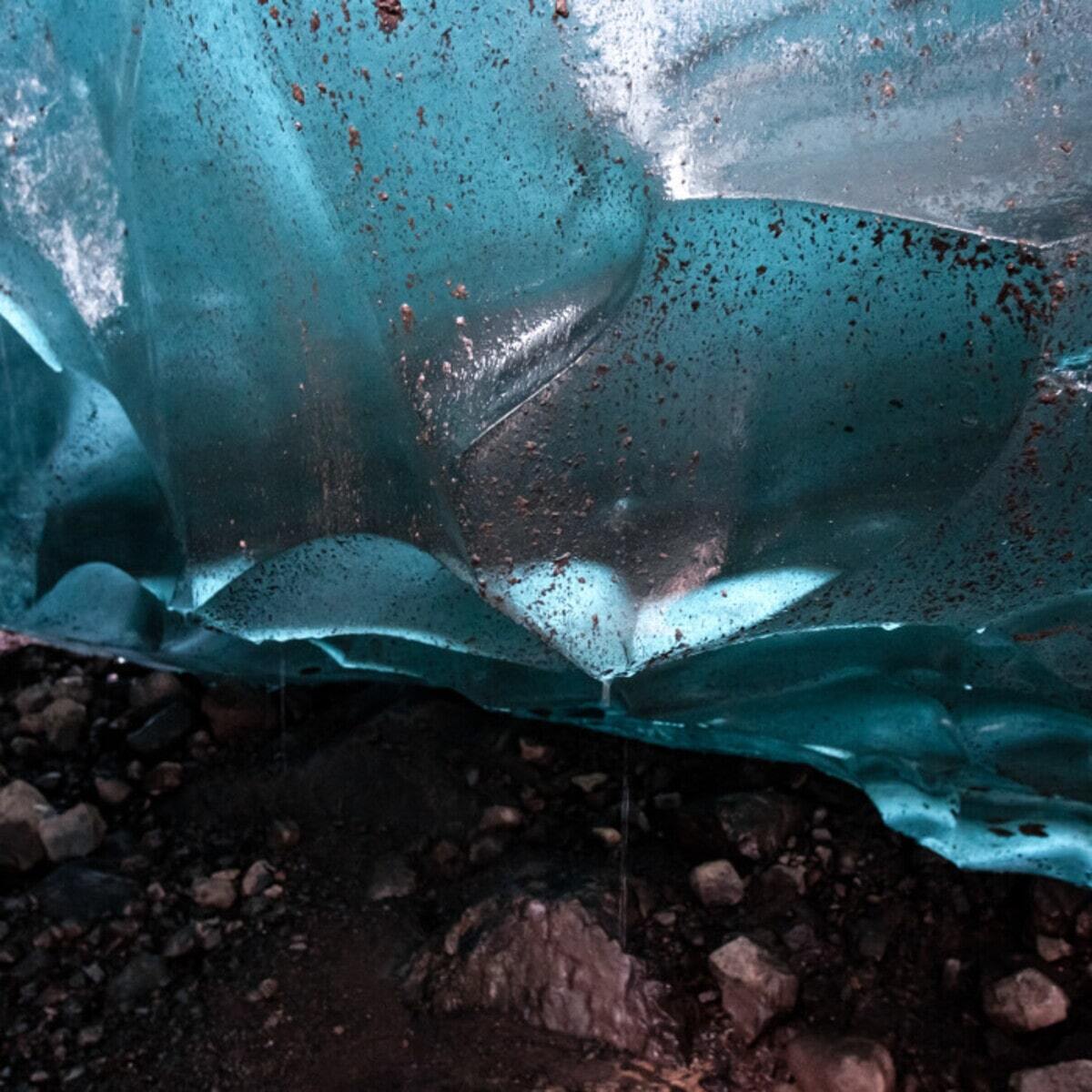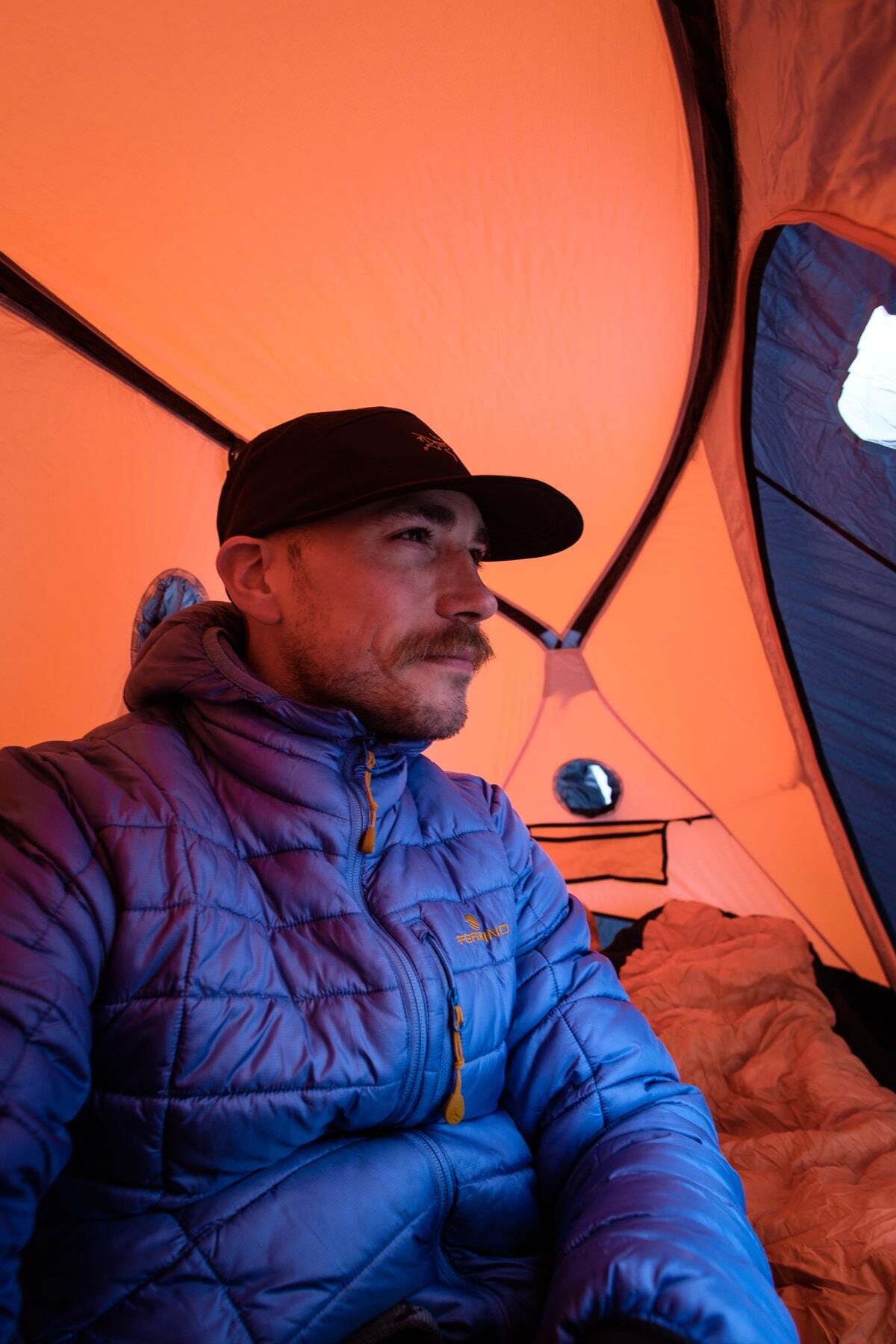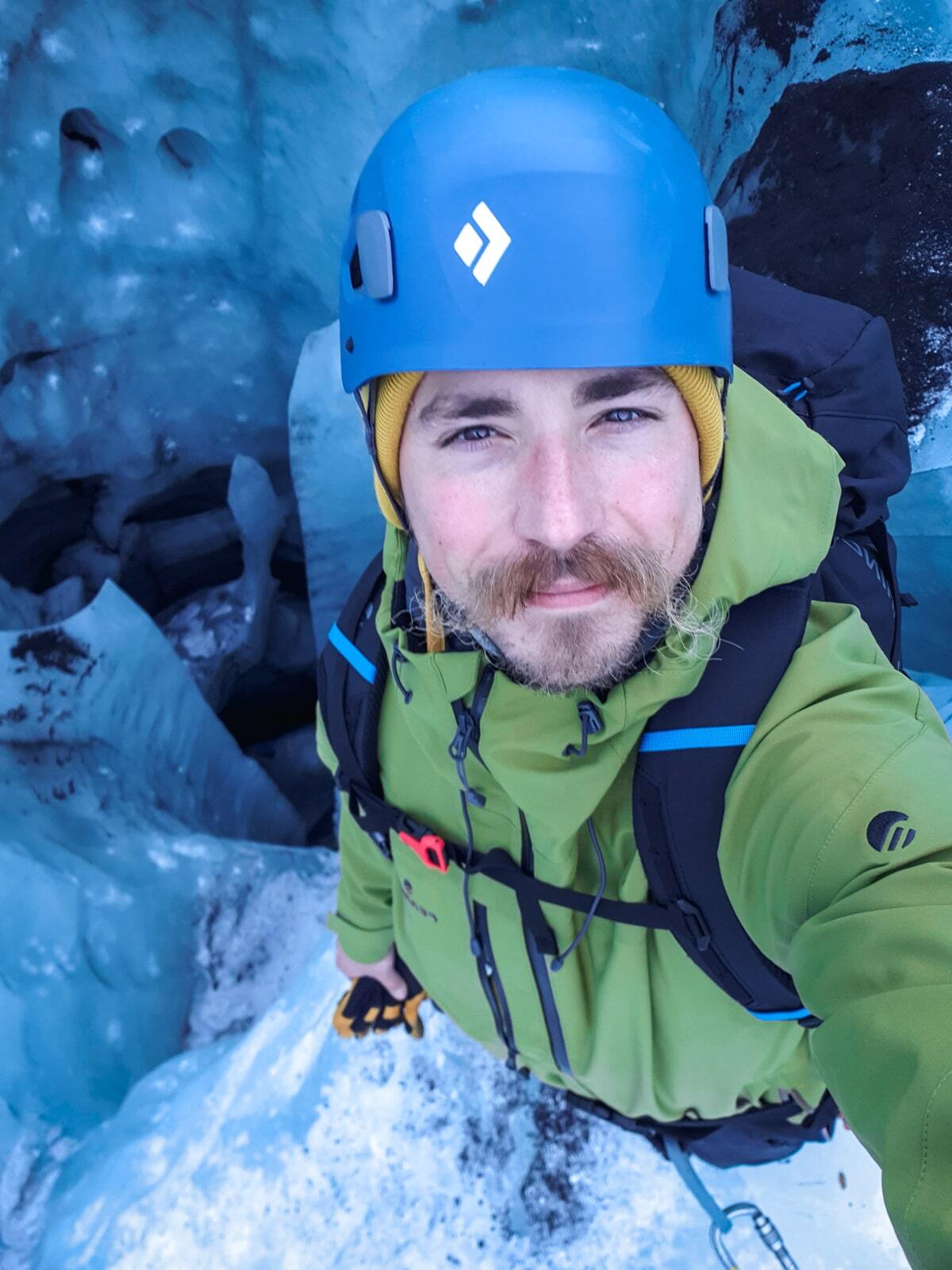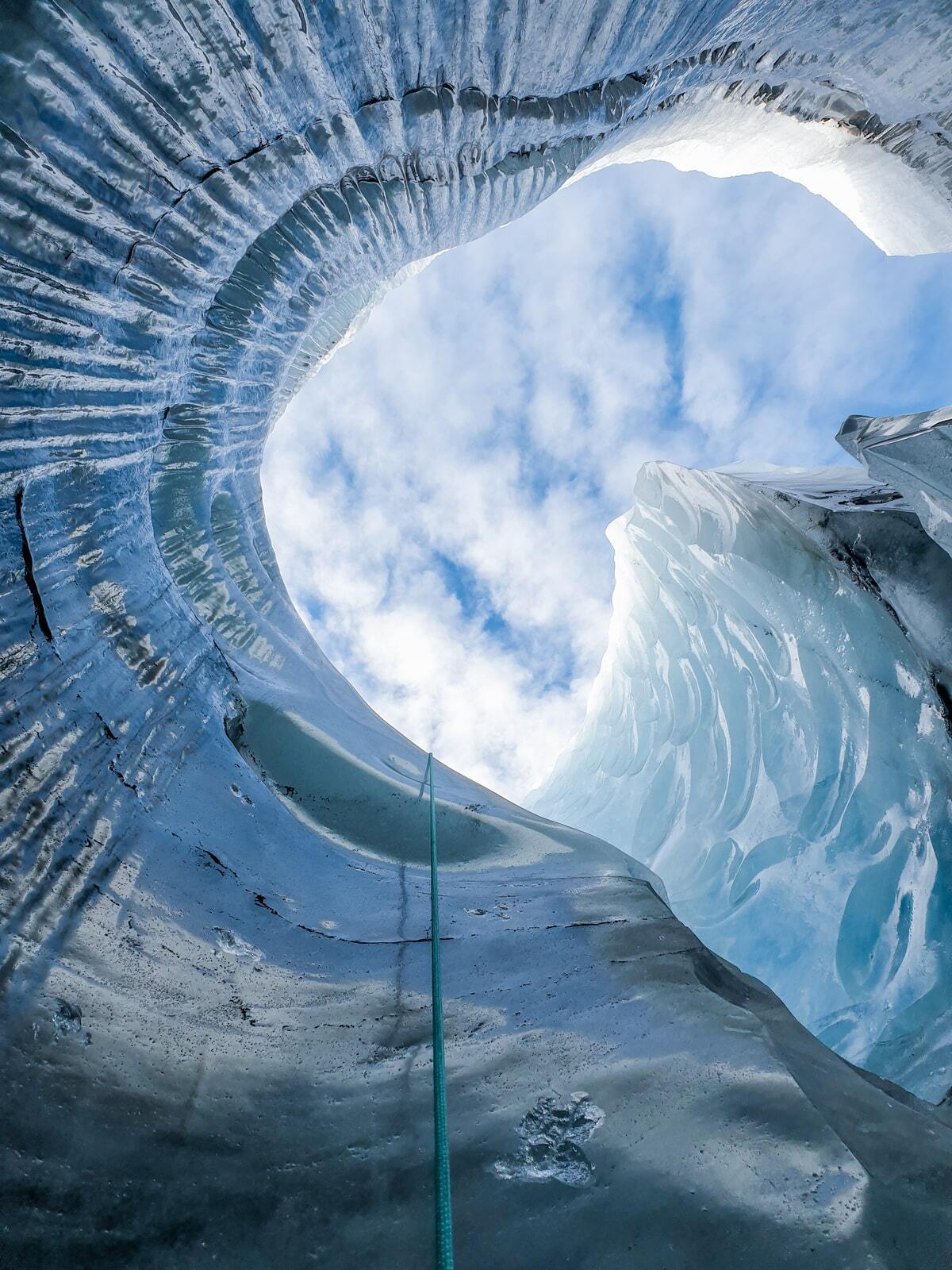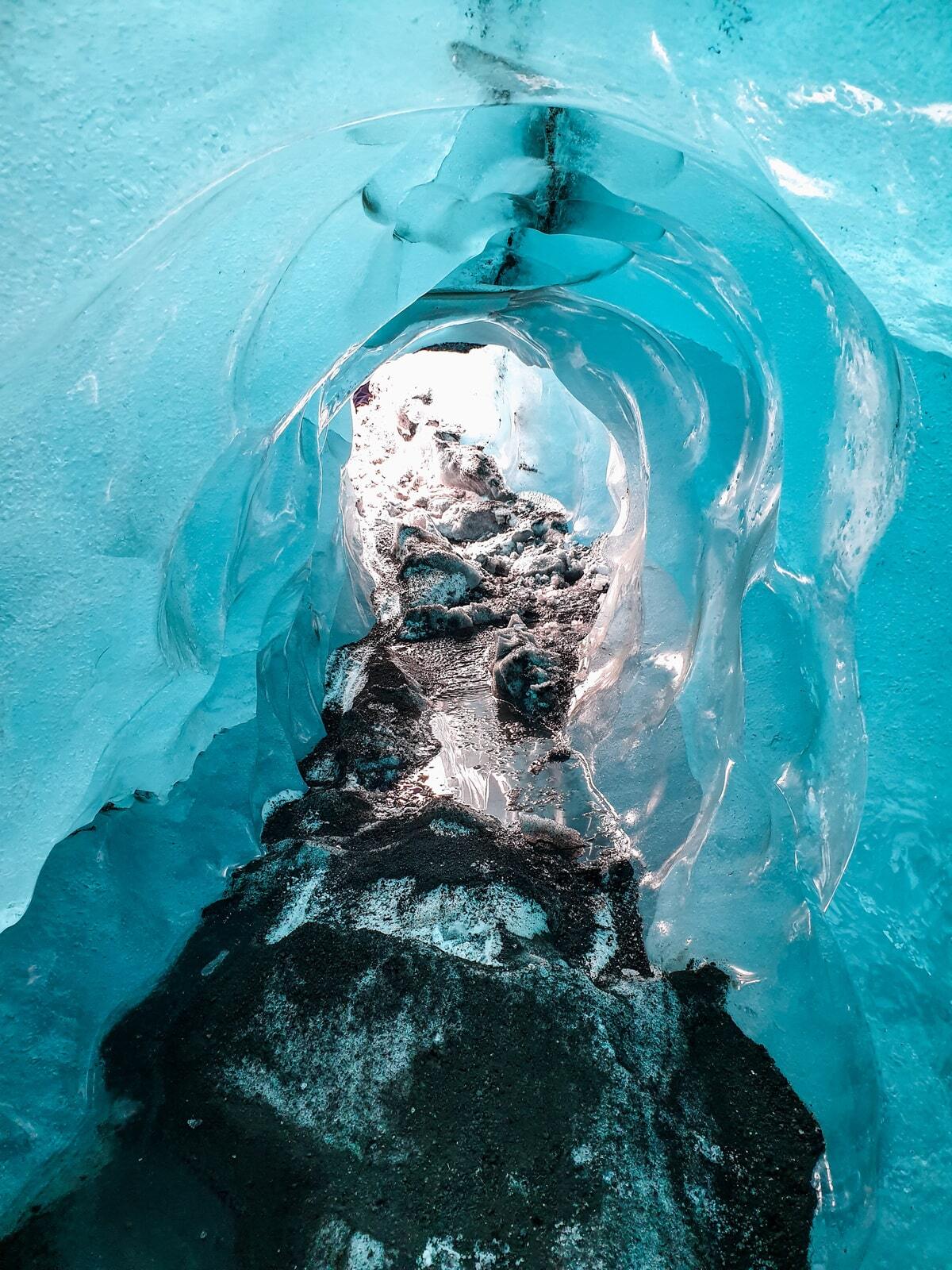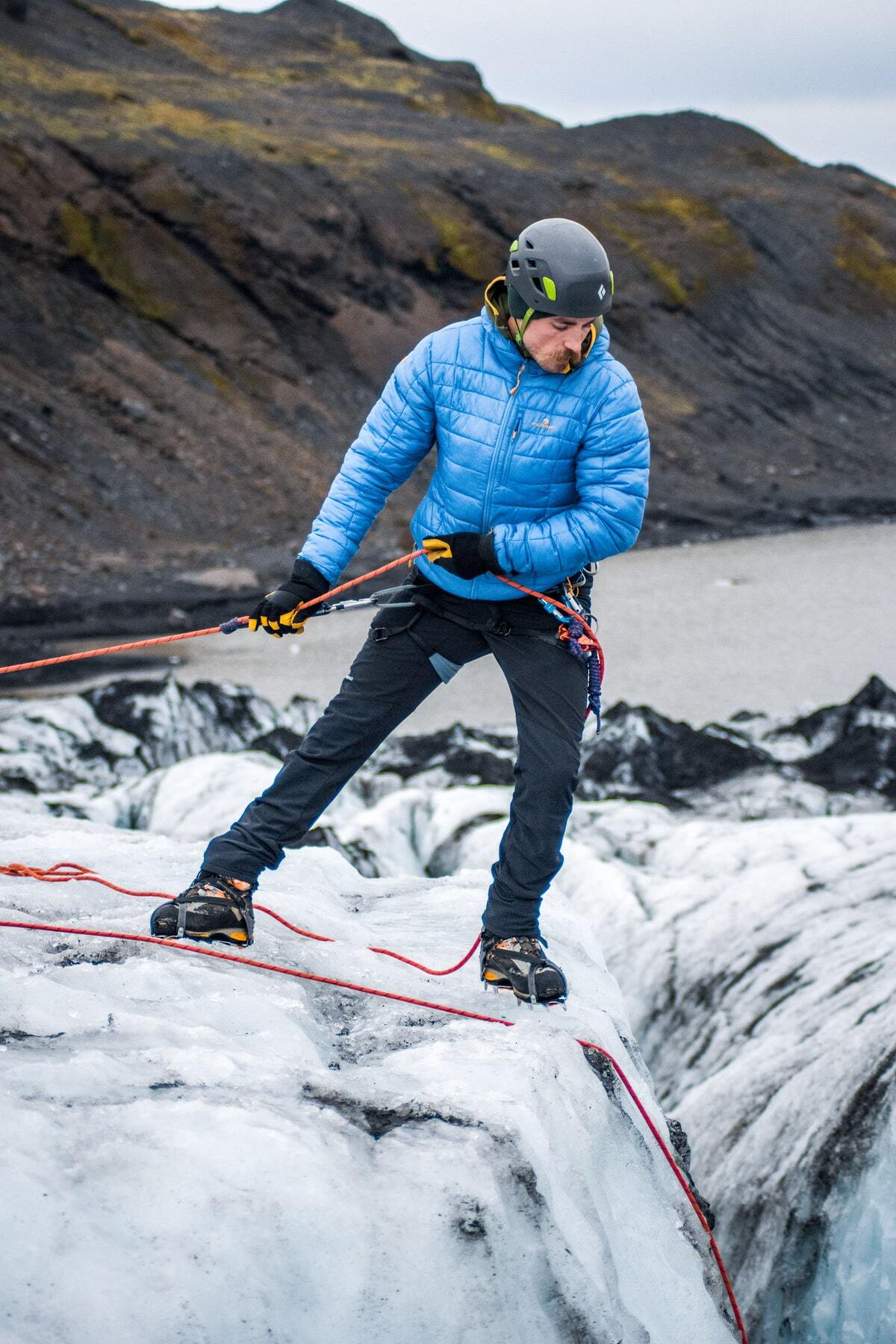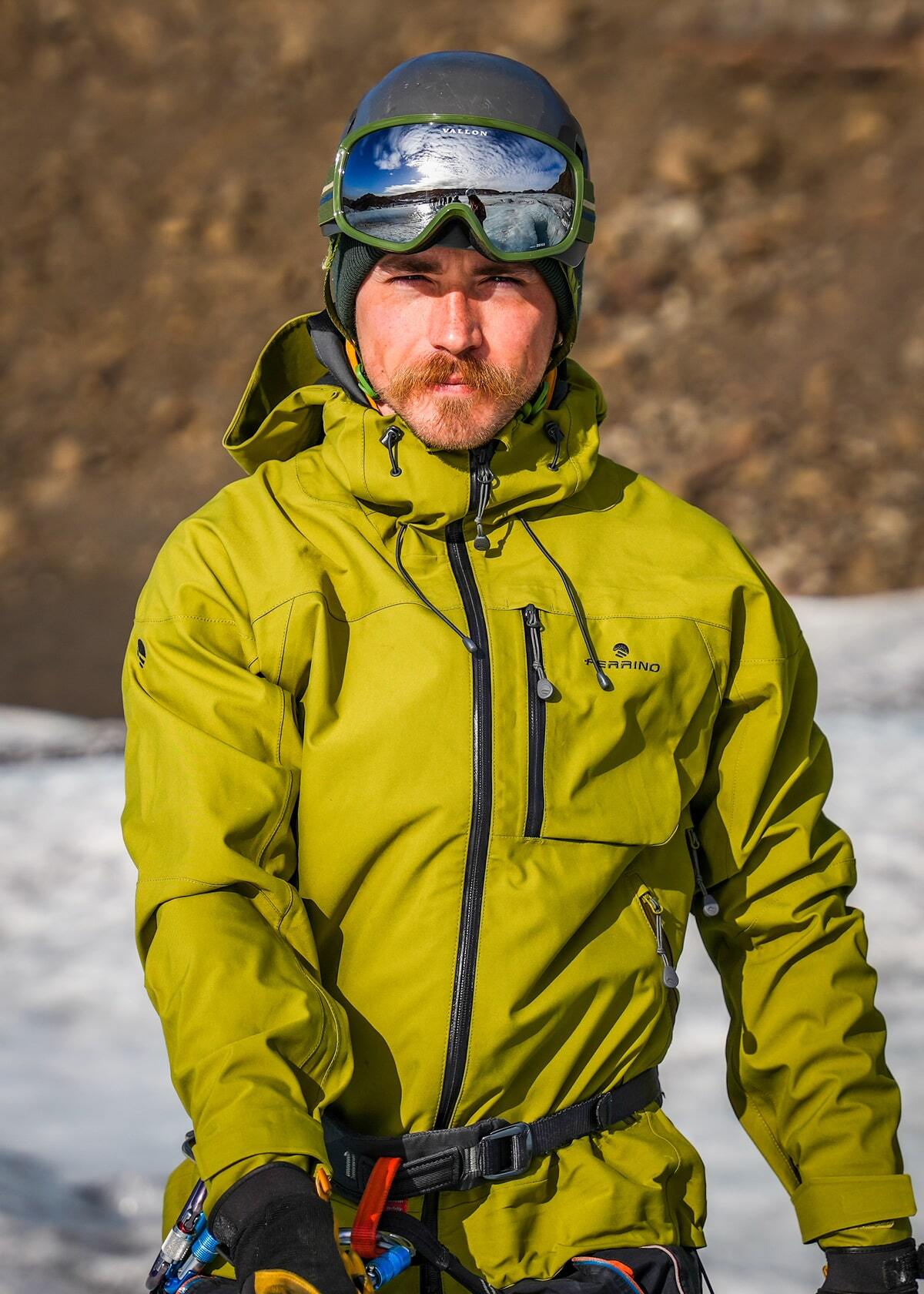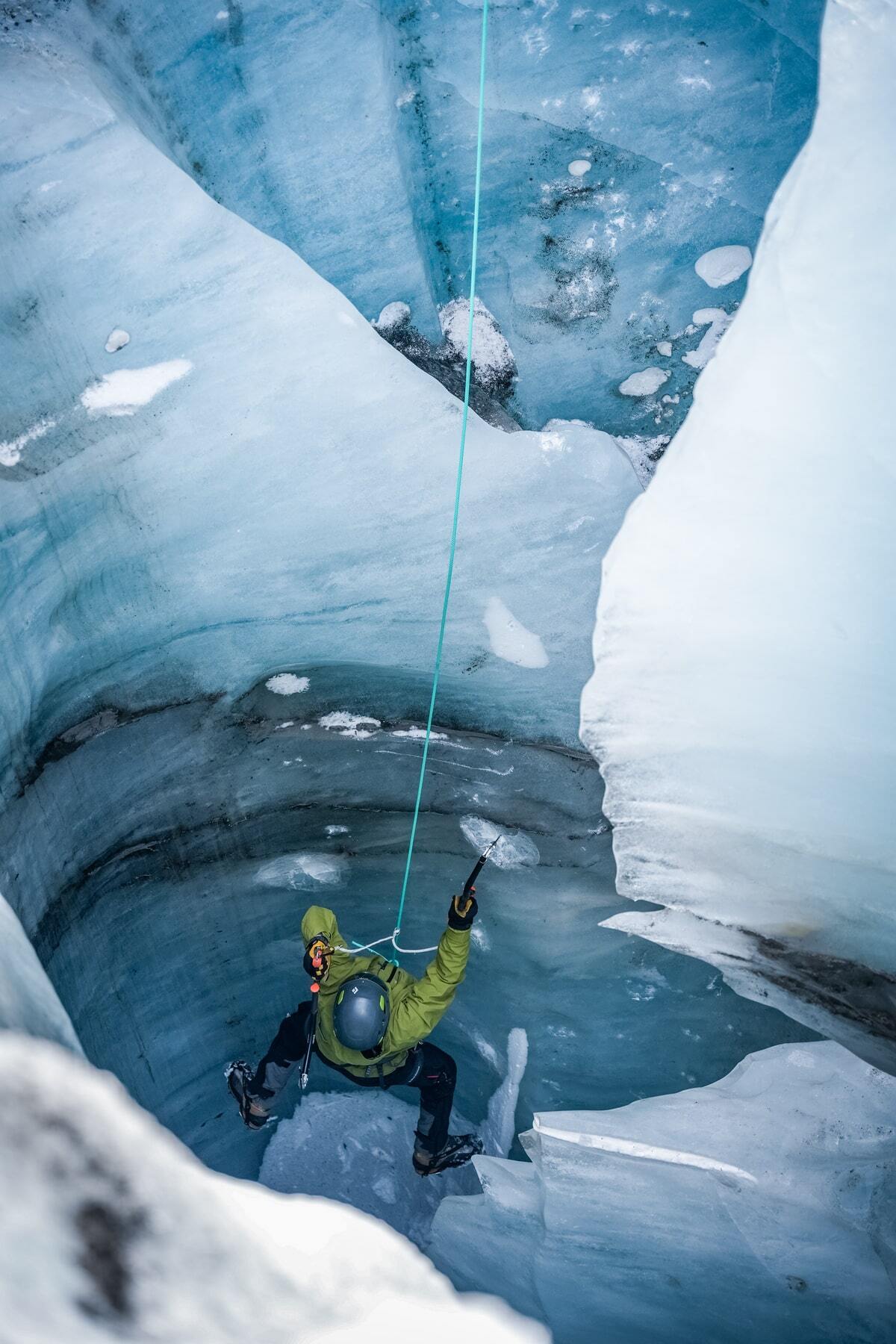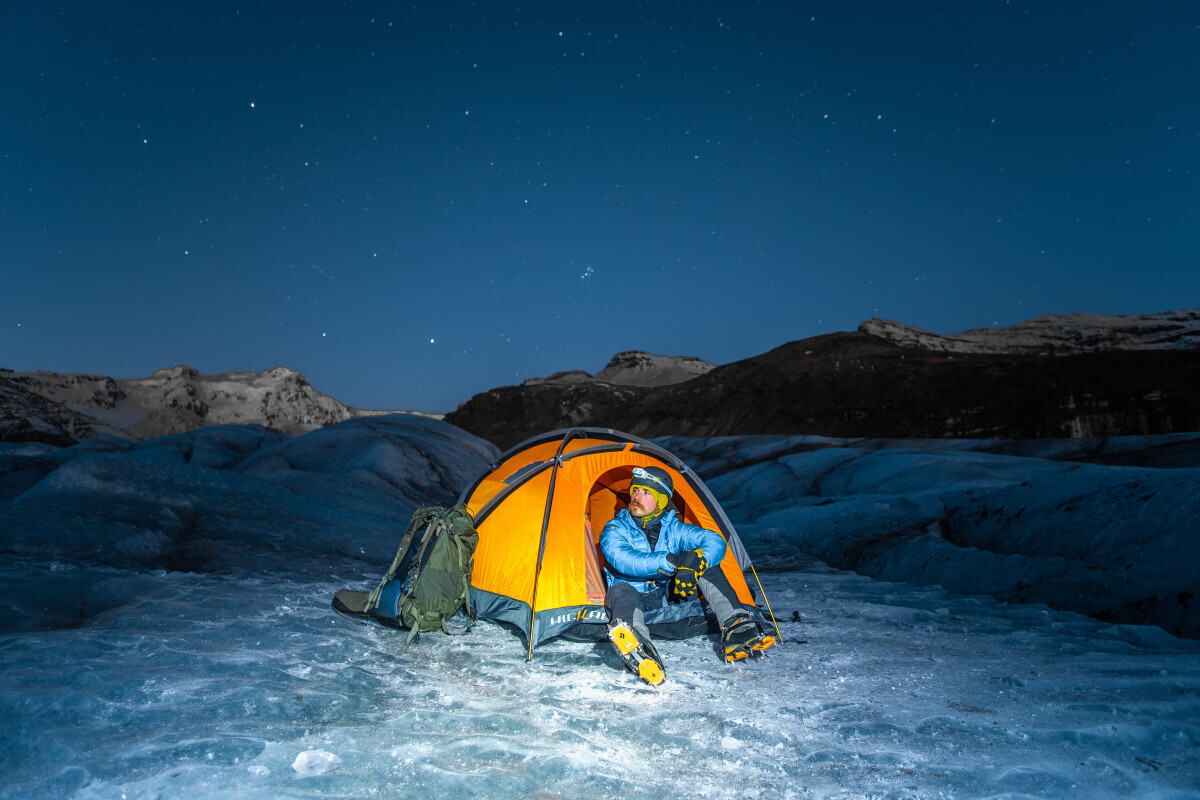
Discovering Iceland's Glaciers with Steven Castellan Bronson
What is winter like? The real winter, the one that in Italy – unfortunately – we almost don't know anymore?
Steven Castellan, aka “Bronson”, reminds us of this with his beautiful photographic images and his stories. Steven has been living and working as a glaciological guide on the ice island of Iceland for three years now and, from there, he sends us his snapshot of the winter that is coming...
“What is winter like in Iceland? Right now, for me, it’s blue, indigo blue. It’s the color the glaciers take on at the beginning of the coldest season, when the big snowfalls haven’t arrived yet but the temperatures plummet below zero and the ice becomes crystalline, transparent, letting the light pass through it and giving it back with these incredible shades. It’s crazy, beautiful! It makes you want to stay out there exploring forever… too bad the hours of light are so short!”
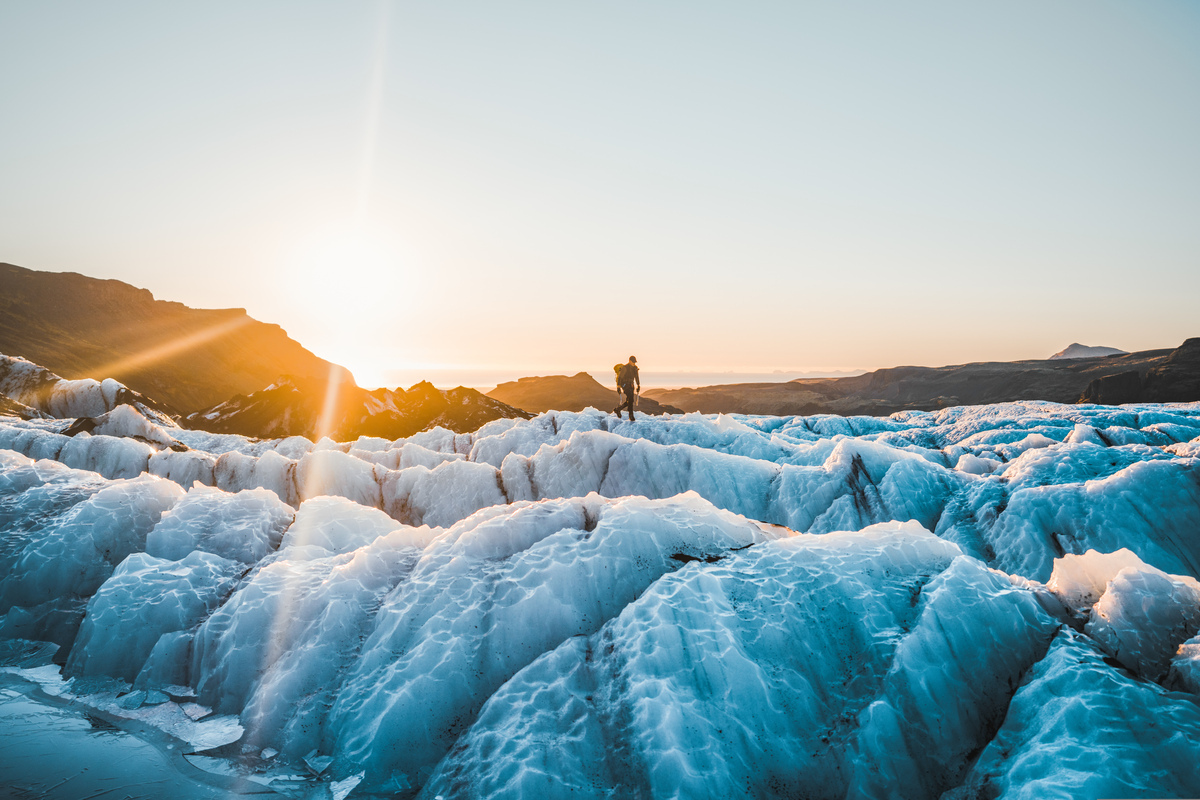
Extreme temperatures, very short days. It may be the school memories of Leopardi’s “Dialogue of an Icelander with Nature”, but it doesn’t seem like an idyllic place to live…
“For those who, like me, have always loved the wilderness and contact with the wildest nature, this is paradise! Icelanders, for their part, are perfectly at ease: here everything is designed to cope with such a difficult climate. Almost all the cars are off-road, equipped for the winter with studded tires and chains, while the road cleaning and maintenance services are super efficient, so bad weather doesn't interfere too much with daily life. Of course, extreme events sometimes occur here too: last year, at the beginning of December, a sudden storm brought two meters of snow in a few hours, followed by a sharp drop in temperatures. The road service didn't even have time to spread salt and even the snowploughs were stuck. For a few days everything stopped: everyone was holed up at home! I too, along with my team of glacier guides, got stuck, but we consoled ourselves by watching a few videos on YouTube... obviously dedicated to glacier explorations!”.
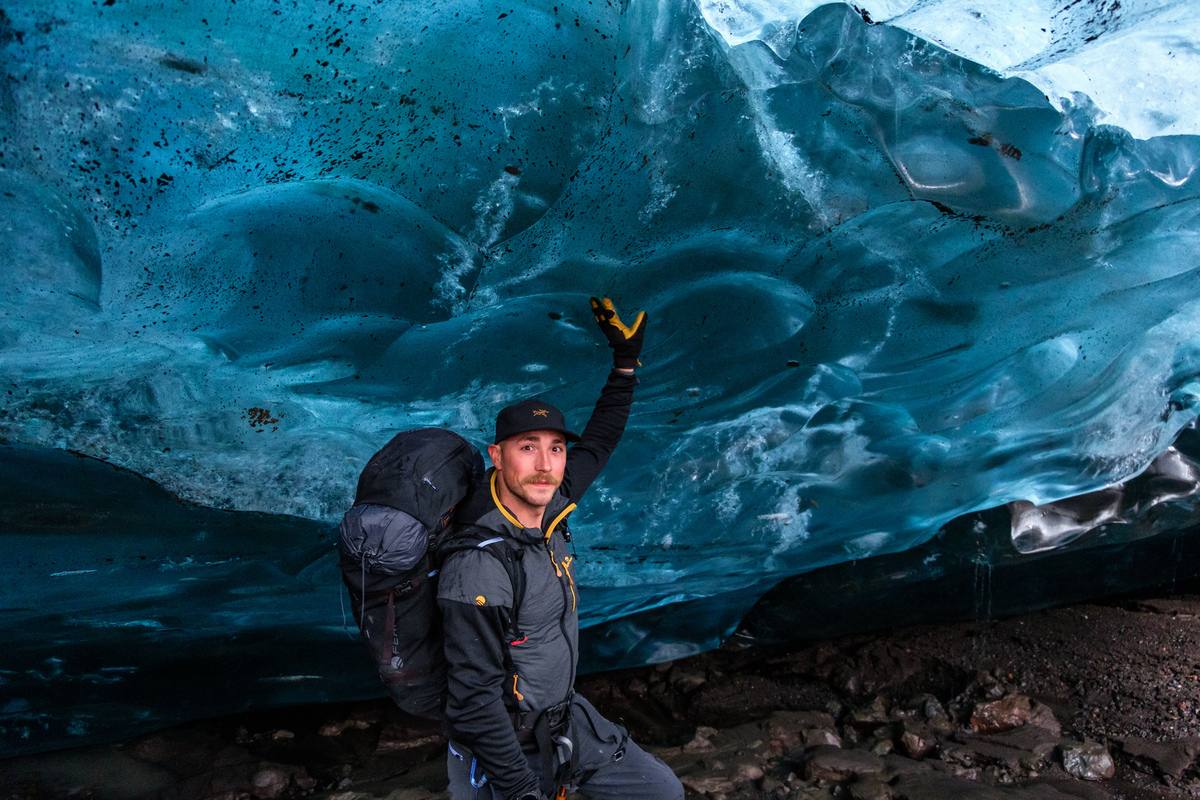
At this point the question is necessary: Steven, how did you end up in Iceland?
“It’s a story that started a long time ago. I was born in Bassano del Grappa and, having the Dolomites at my fingertips, I’ve always loved outdoor activities. More than the aspect of sports performance, what has always intrigued me is exploration, the adventure experienced in the most remote and wild places. Alongside this passion, I’ve cultivated those for photography and music, and I got a degree in sound engineering. But it’s always been the love for adventure and wilderness that has guided my life choices. After graduation, I decided to work first as a welder and then as a laser cutting technician, jobs that had nothing to do with my studies, but that left me free time to dedicate to my “gypsies”. Working the first shift in the factory, I always had free afternoons and on Fridays, starting at 1 pm, it was already the weekend for me. Time for climbing, kayaking, ice climbing and a thousand other things. Above all, time to dedicate to wild “tents”, like the one we organized at Pale di San Martino during the Giorni della Merla: fantastic days and nights at -33 degrees, but we were well prepared and equipped and we enjoyed them to the fullest!”.
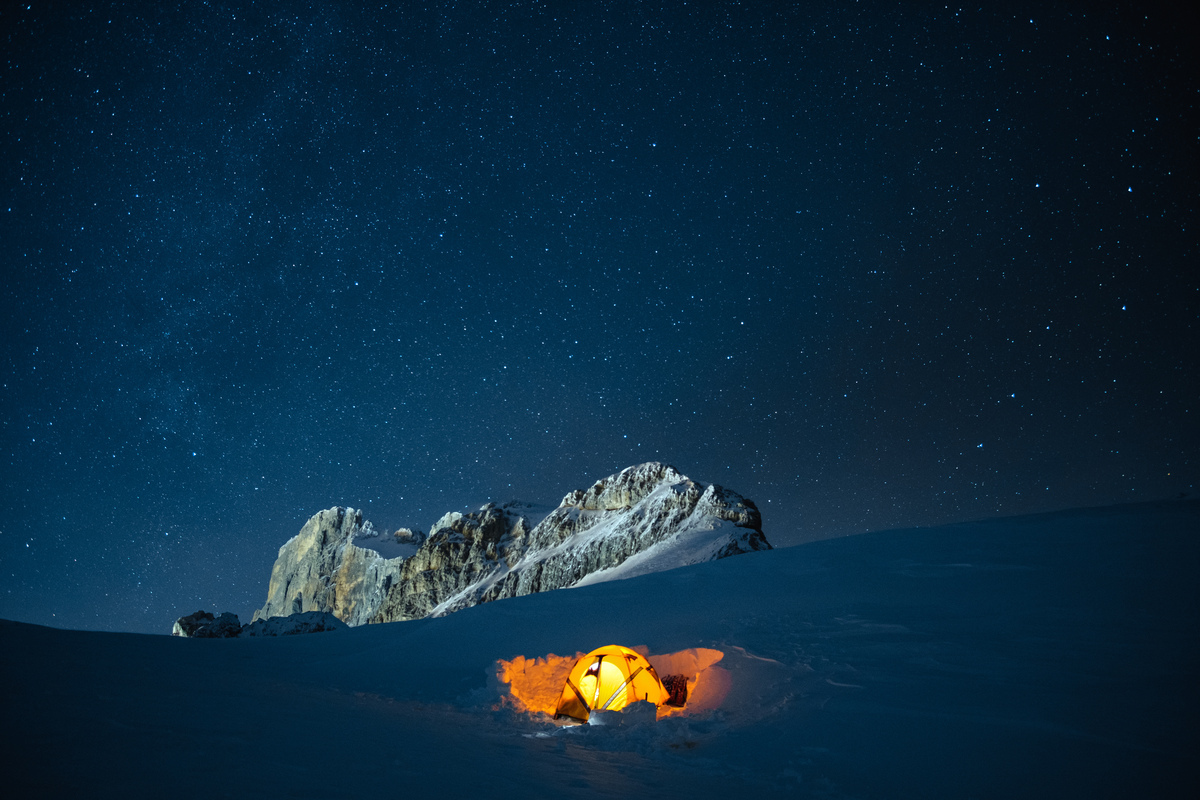
The turning point, however, came with a bicycle trip in 2018…
“Exactly! No matter how much free time my job gave me, at a certain point I felt the weight of routine. Since I was a child I would browse National Geographic dreaming of traveling to the most distant places: Alaska, New Zealand, Japan, the countries of Northern Europe… At a certain point I realized it was time to go. I chose a destination and a type of trip that were within my experience and my budget, so I set off for Iceland, to tour the island alone by bike. Before leaving I quit my job: I didn't want it to be a "expired" trip, with a return date already set; I needed to take all the time I needed to fully savor this new experience. In the end I was on the road for two months. Two fantastic, crazy months! Two months of meetings with extraordinary people, cyclists and hikers even crazier than me. Then magical moments like when I found myself pedaling in the middle of nowhere, side by side with a group of galloping horses… Two months of opportunities continue to light the flame of my passion for photography: at every kilometer there was something worth stopping for and shooting! Finally the glaciers: enormous, imposing, mysterious! They often marked the horizon of the stages of my journey: they seemed there, within reach, yet I was grinding out kilometers and they never came closer. A sign of the immensity of the spaces that can be savored in Iceland”.
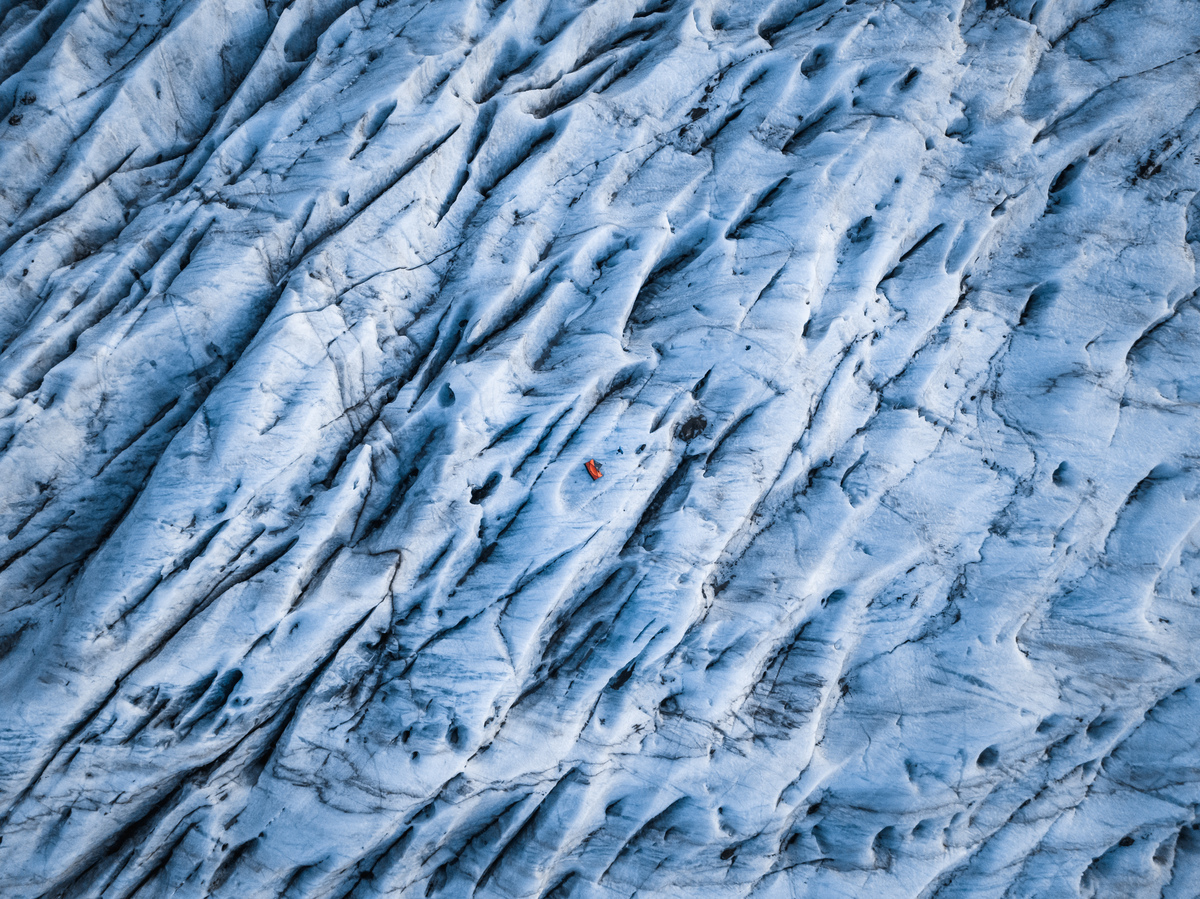
When did you have your first close encounter with the Icelandic glaciers, which later also became your workplace?
“It was right at the end of this trip. Back in Reykjavík, after completing the bike tour, I decided to take advantage of the time remaining before returning to tackle the Landmannalaugar-Þórsmörk, one of the most incredible treks on the island, which winds for seventy kilometers in the Fjallabak nature reserve, in the presence of the Eyjafjallajökull and Mýrdalsjökull glaciers. In front of this immense and wild beauty I clearly felt that this was the place where I wanted to be. When I returned to Italy I already knew that I would not go back to my previous life”.
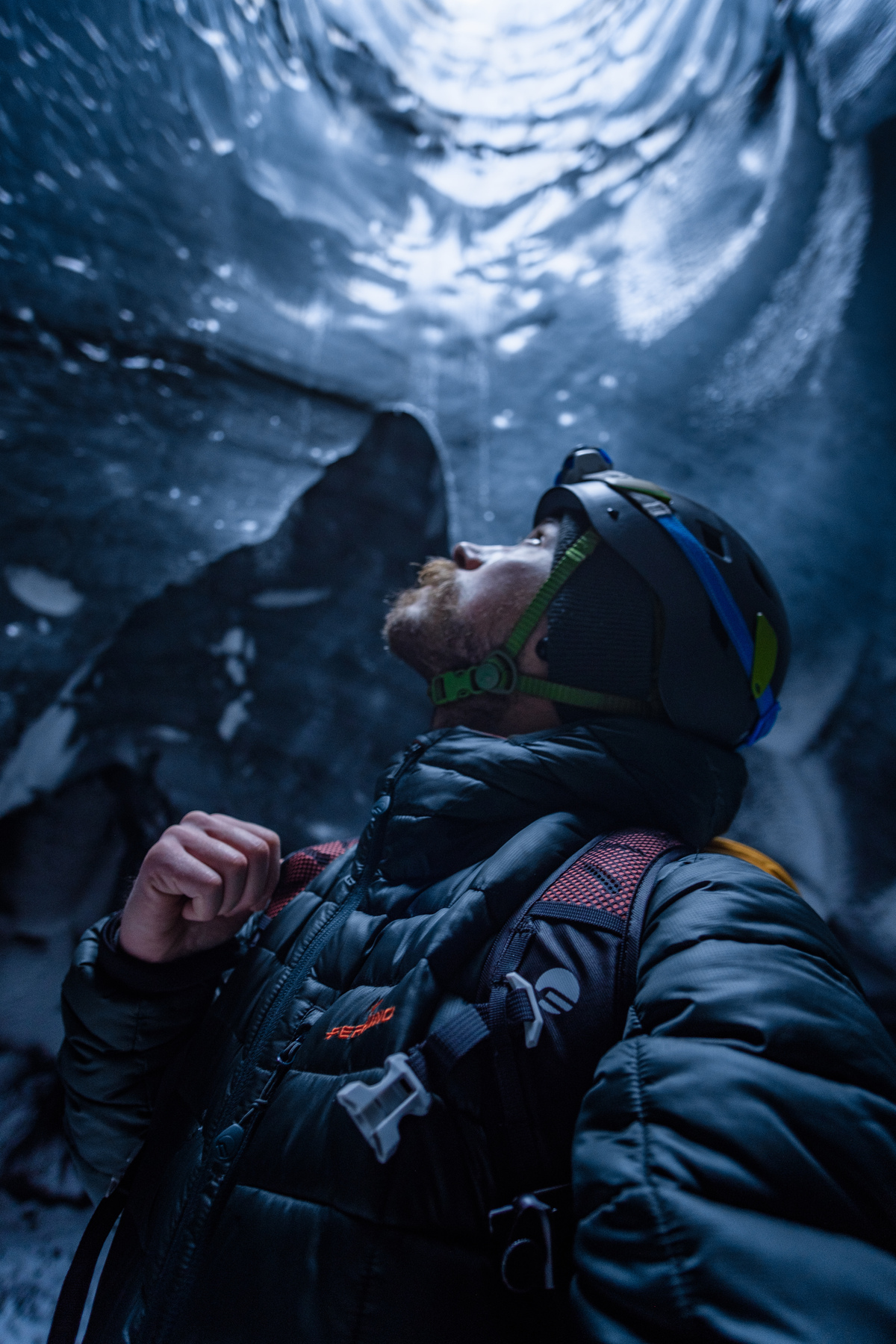
So, is this where the idea of becoming a glaciological guide comes from?
“Yes, even though I had some doubts at the beginning, because I have always lived my passion for the outdoors as a self-taught person, without teachers or courses and without having any particular recognition or certifications. However, when I contacted the owner of Arctic Adventures, the guide agency I work for today, and told him about my experience, he was immediately positive: “Here we need people like you, people who want to learn and know how to hold out when the cold arrives…”. That same summer I was already in Iceland to follow the training courses as a basic level glacier guide. Rope maneuvers and crevasse recovery techniques and securing the injured person are the basis of the training of a glacier guide, especially in such a wild environment as that of the Icelandic glaciers, where it is often not possible to hope for support in a short time from the outside. For me, learning the basic notions was quite simple, partly thanks to the experience I had already gained, partly because of my natural curiosity towards the technical aspects related to to the use of outdoor equipment. Even in the collaboration with Ferrino, in fact, I have never limited myself to promoting their products through photos and posts on my social networks, but I have always tried to give an active contribution, with the experience gained in the field, suggesting what in my opinion can be modifications or improvements”.
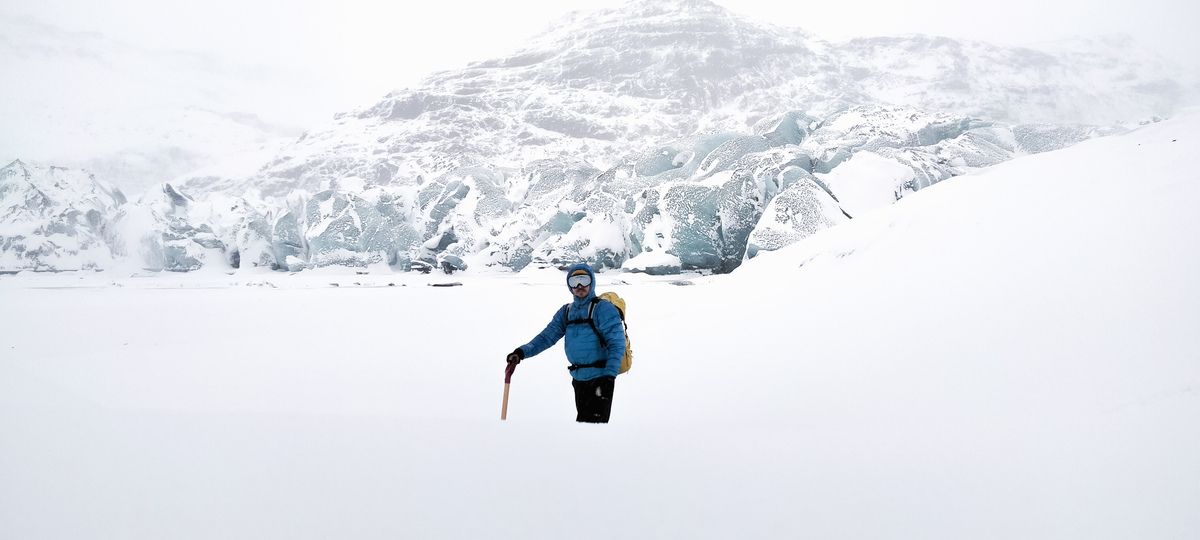
In short, you immediately felt at ease in your new job and in your new environment…
"I would definitely say so: in fact, a month after qualifying, I was already accompanying clients on "climbing" tours, those along the most challenging glacial routes. Today, three years later, I have the satisfaction of being the manager of my own group of guides."
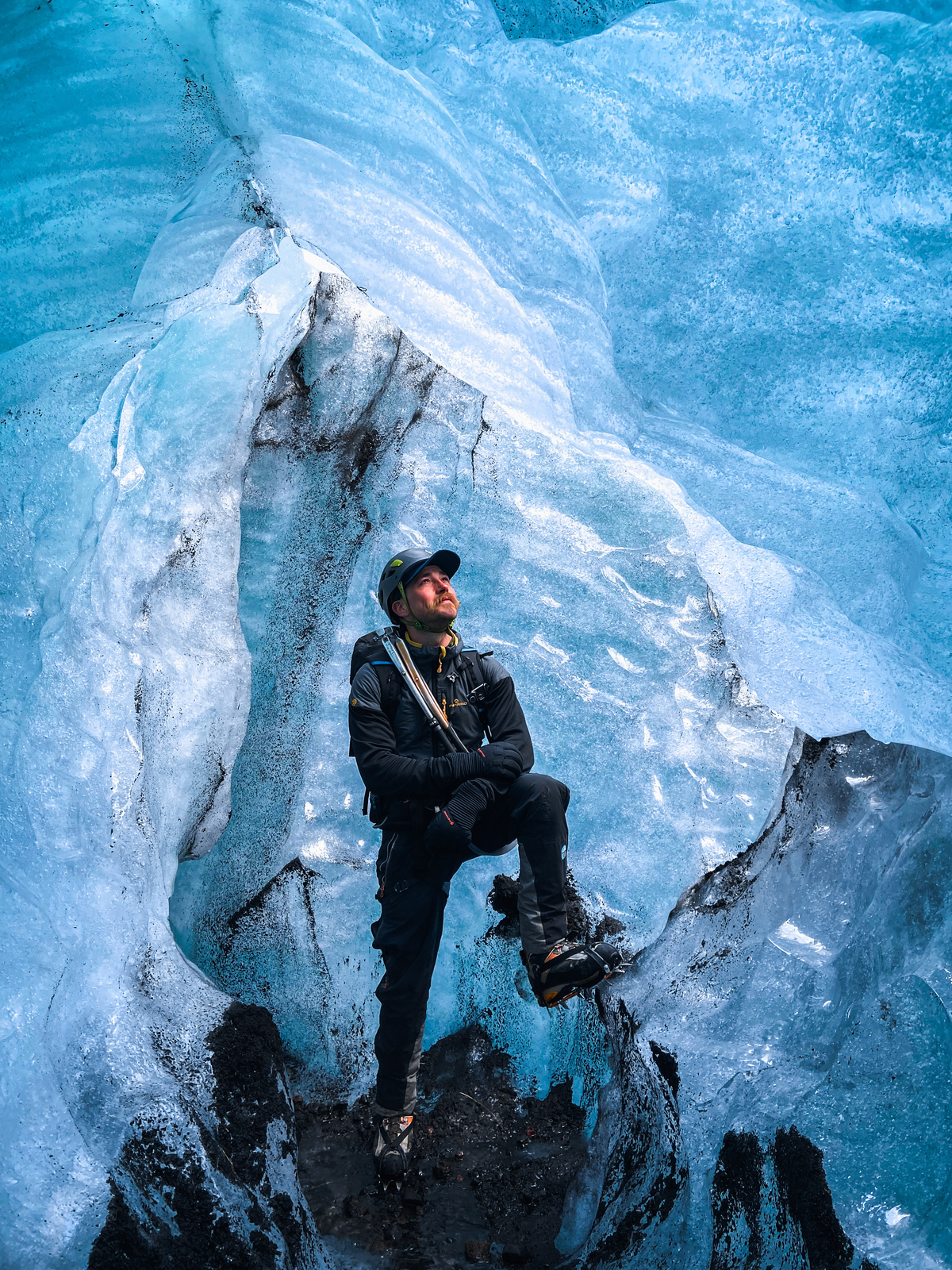
What does the activity of glaciological guides consist of?
“The most obvious activity is to accompany clients on excursions on glaciers, but there is a lot of work behind it. People come here from all over the world, with the most diverse levels of preparation and experience. There are groups of people who have never even walked on ice and to facilitate their progression we often have to “build” the routes, digging steps in the steep points and filling the holes in the most dangerous and exposed points with ice. Then there are those who have high-level skills and we propose more challenging itineraries to them, which lead them to tackle sections where they have to climb with the technique of using crampons and ice axes in frontal progression, or do the abseils into the moulins, the incredible sinkholes through which you descend right into the heart of the glacier… an unforgettable experience for anyone who tries it! Studying and preparing these itineraries is the most challenging part of my job, but also the most beautiful, because every time it is a discovery. The Icelandic glaciers are immense and you can invent different routes every time. This means always going on an exploration, living adventure and also the risks that this entails. To tackle the glacier along a route that has not yet been traced, you need to be “solid”, know very well what you are doing and have great experience and confidence with the environment to be able to move with the right safety margins. Then you also need imagination and creativity to imagine and prepare a route that can offer customers the most diverse and exciting situations, giving them a sense of immensity and wild nature. On my days off from work, I can then dedicate myself to the adventures that I like most: multi-day expeditions with my tent, alone on the glaciers. It is the thing that makes me feel most in my element; there alone in the middle of nowhere I really feel at home! In short, here every day I can experience that contact with the wilderness that I have always sought and around me there are other guides who share the same passion. Yes, I am really happy with my choice!”.
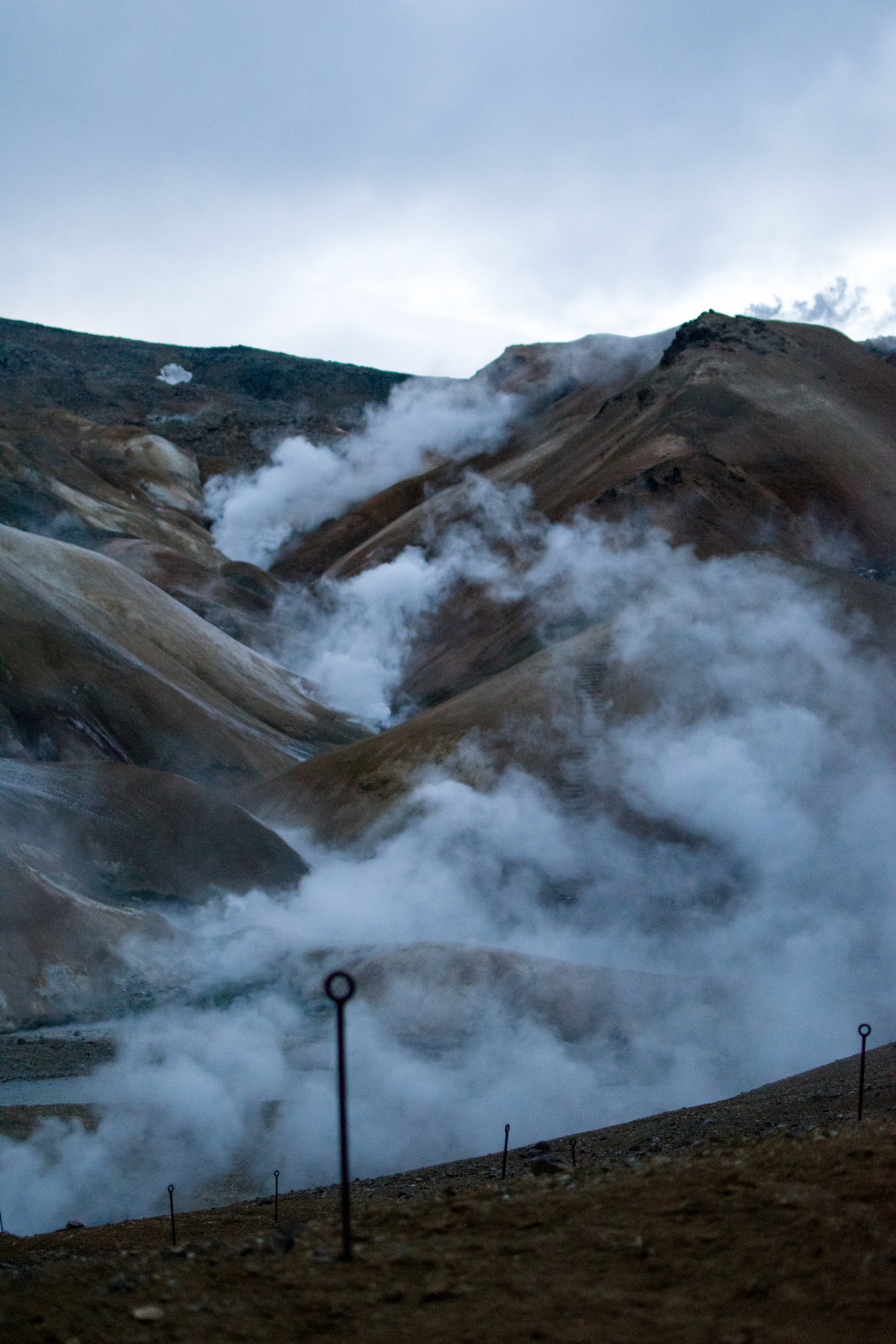
Let's end with an off-topic question... how are you doing in terms of "socialization"?
“As I just said, I get along very well with the guys in my team of guides and, since we all live together in our base of operations, I would say that good company is guaranteed. I will spend Christmas and New Year's Eve with them again this year and it will certainly be fun. These are occasions in which my Italian origins come into their own, especially in terms of cooking: everyone counts on my passion for cooking and expects me to let them taste some specialties from the Bel Paese... This year, I have already included a good pasta with ragù in the Christmas menu! The relationship with Icelanders, on the other hand, varies greatly depending on the generation, a bit like what happens in our parts. Young people are very open and friendly, they want to keep up with the world and therefore are curious to meet people who come from different places and cultures. Older people are a bit more reserved, but, once you have learned to speak a few words of Icelandic, it is not difficult to become familiar with them too”.
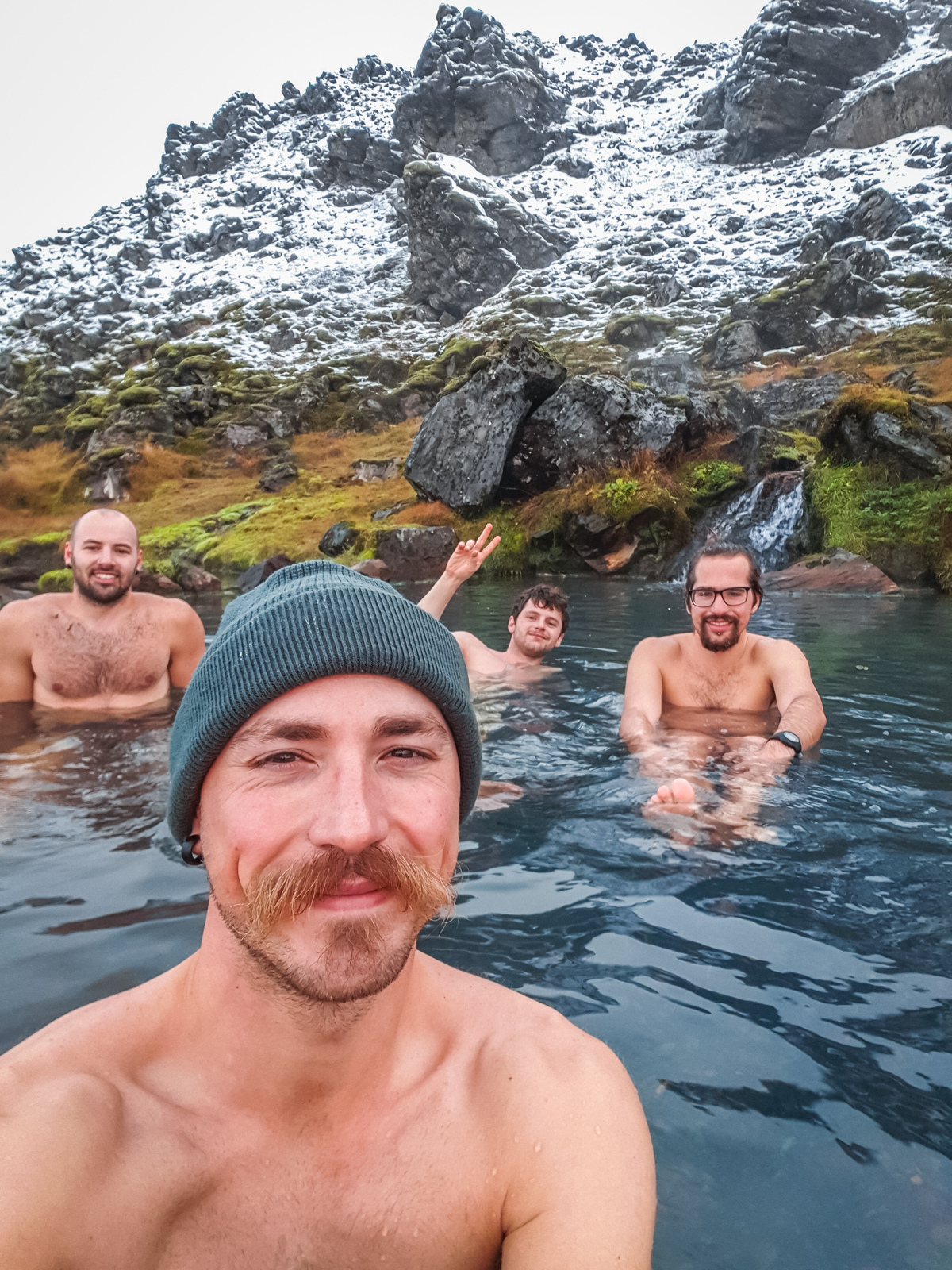
Could you summarize in one sentence the meaning of your experience among the Icelandic glaciers?
“Being on the ice every day means watching time pass like an hourglass. I see the glacier melting day after day, photograph after photograph. The glacier changes and I change. Here, exploration, outside and inside me, never ends and that is what makes me feel alive.”
